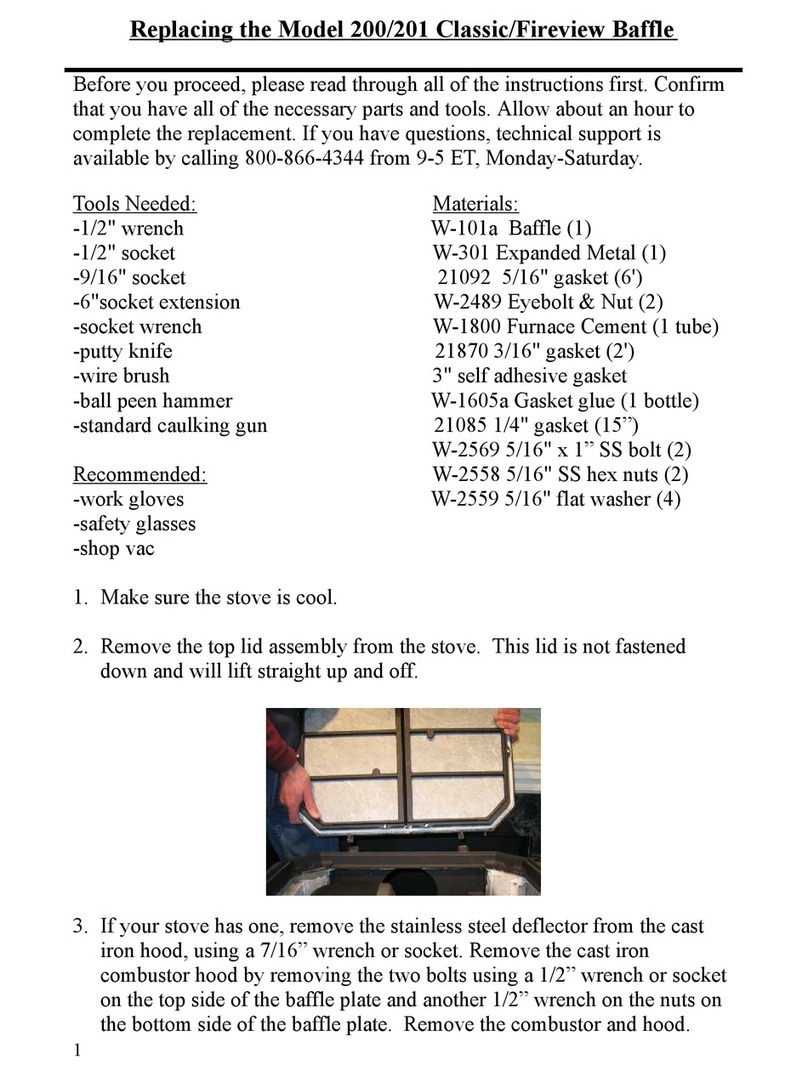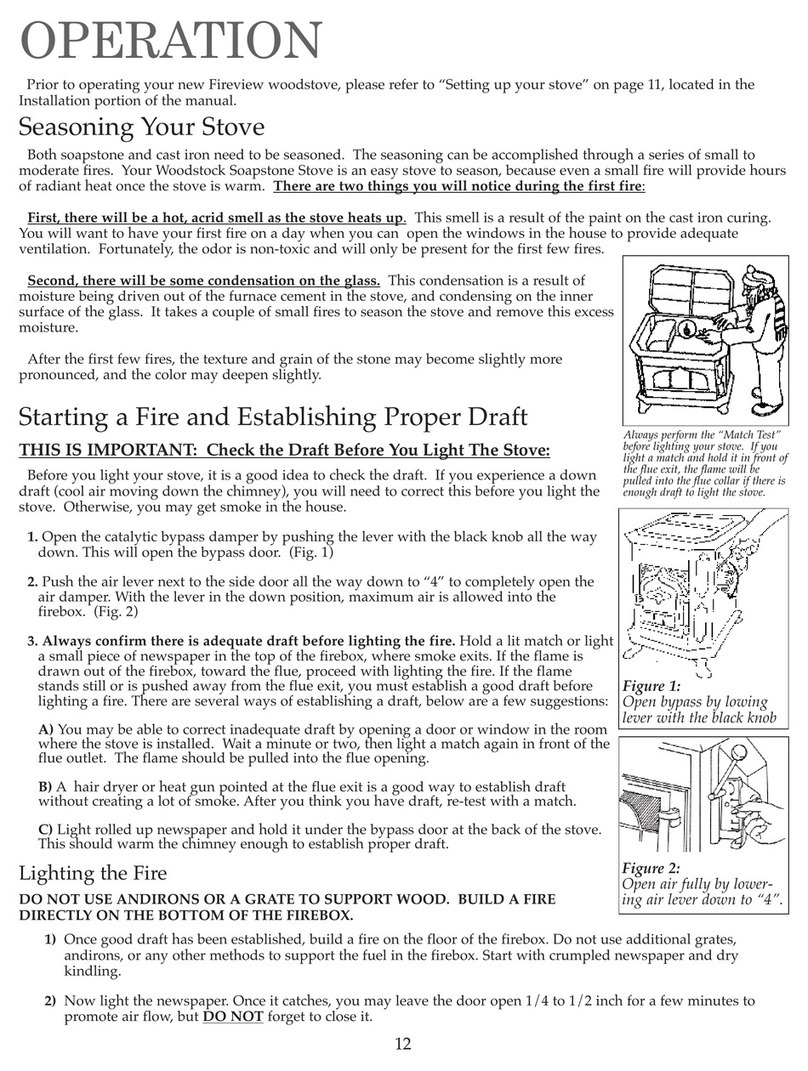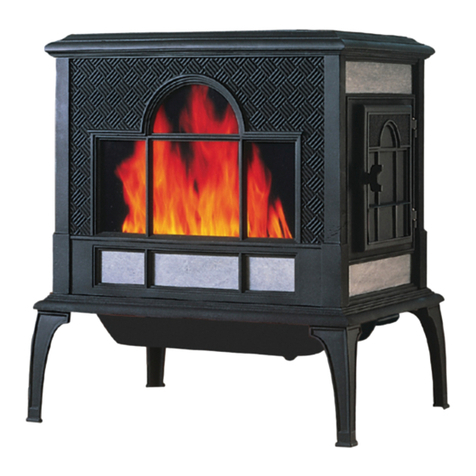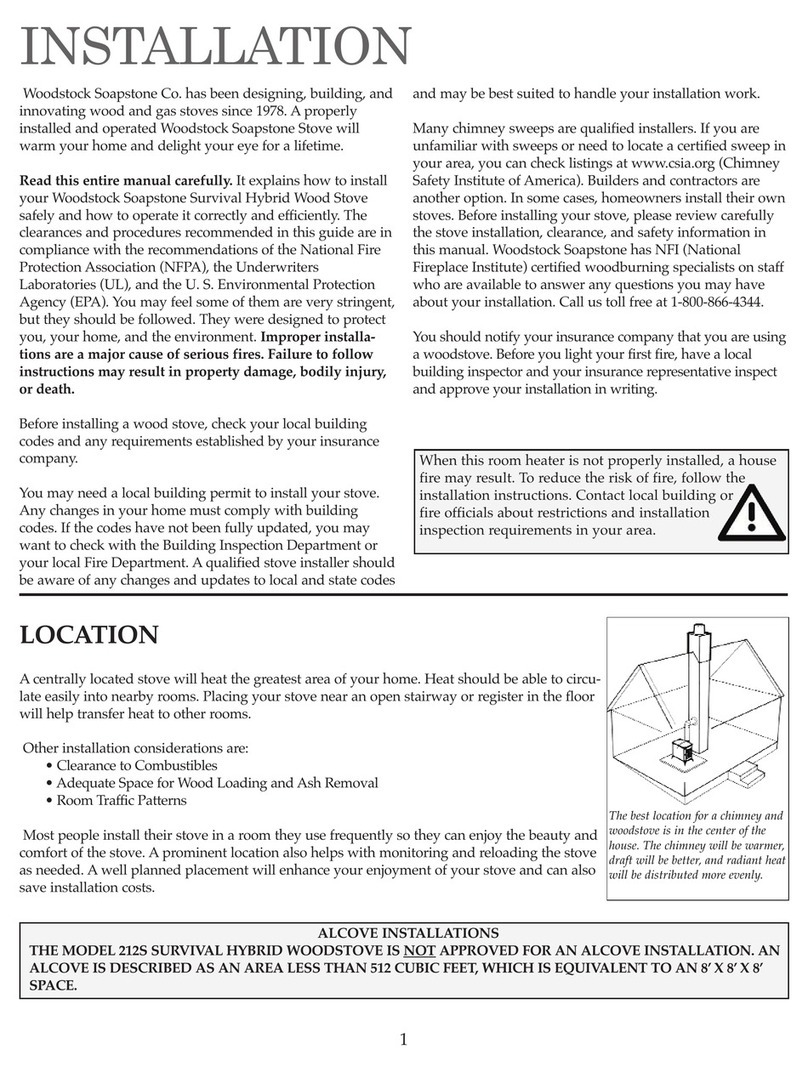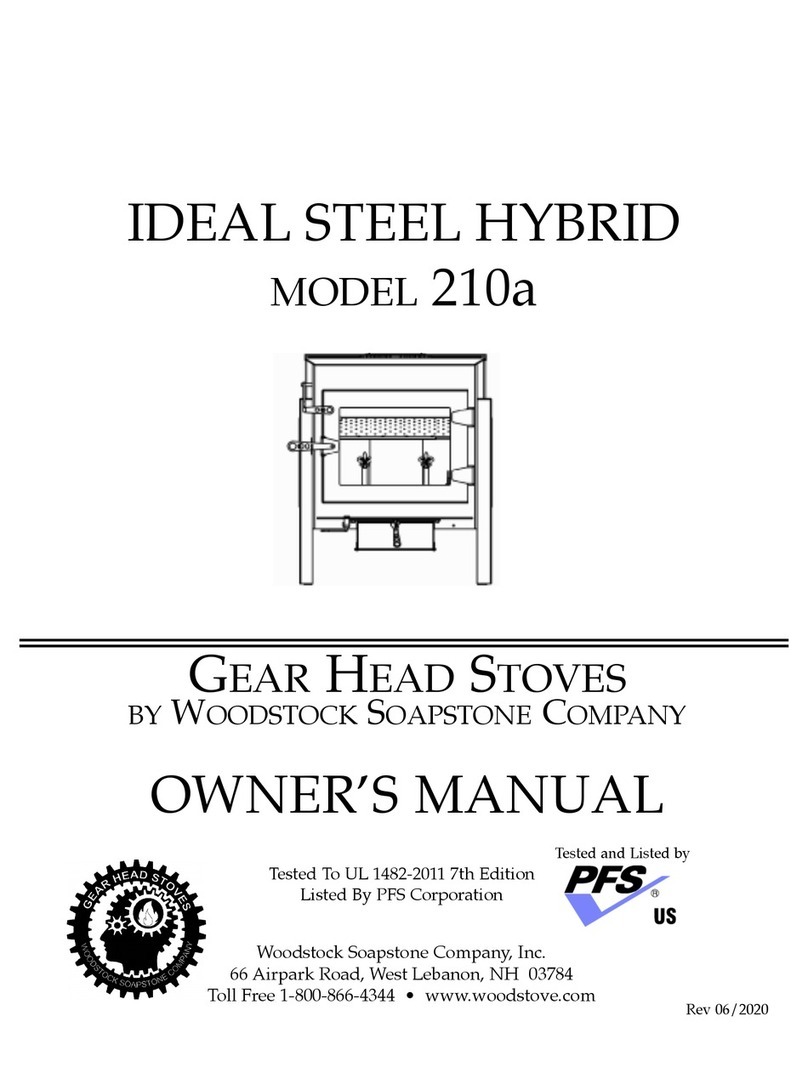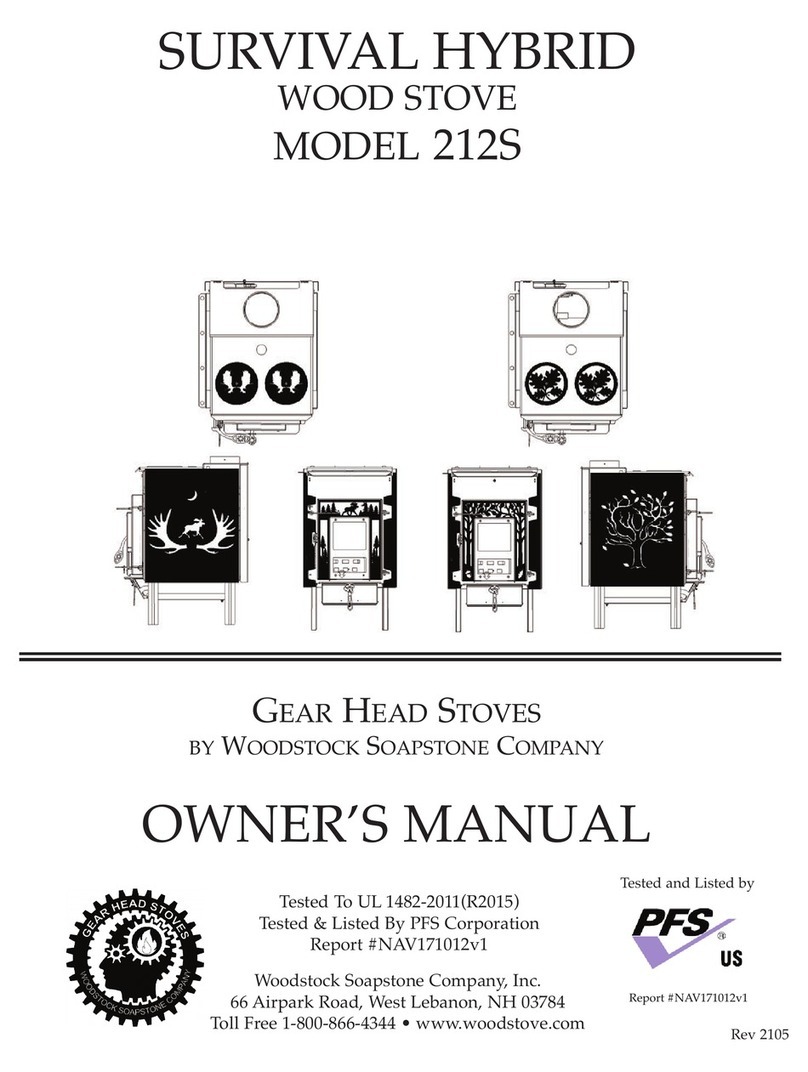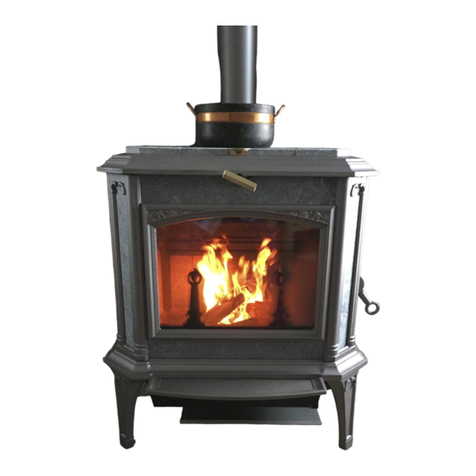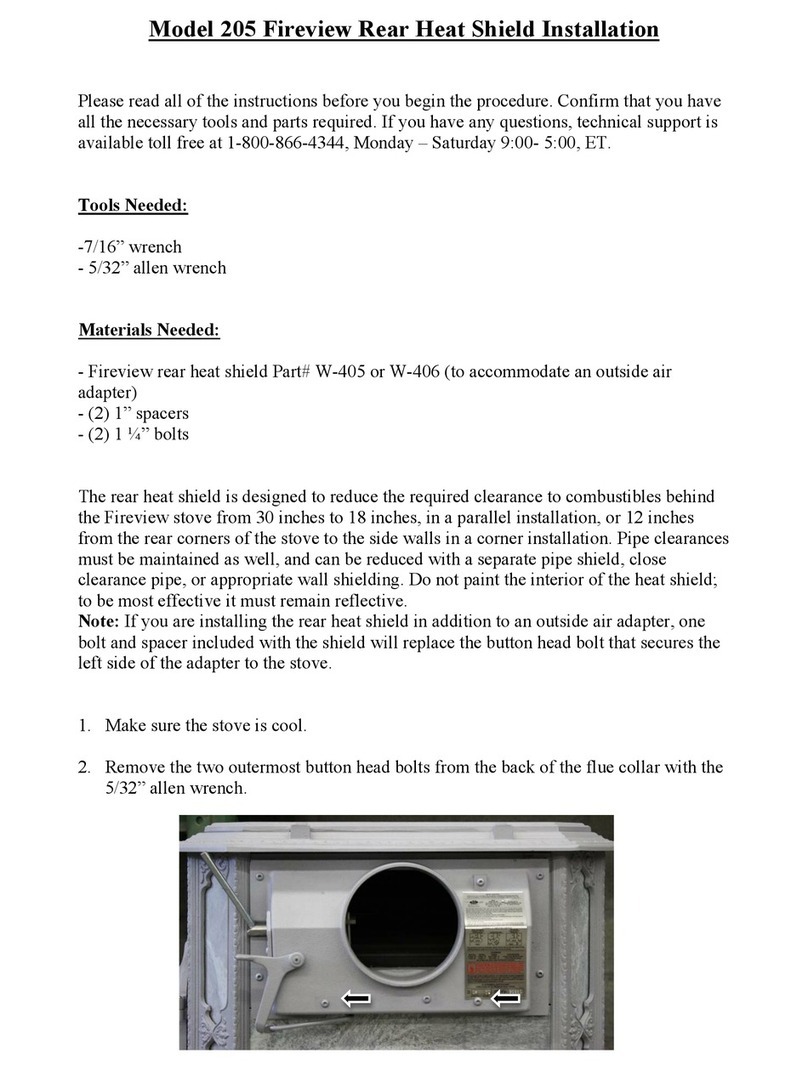
Thank you for using one of our Survival Stoves! The
Survival Stove is designed to heat a small house. Here are
some important things to know before using your stove
for the first time.
THERE SHOULD BE NO SMOKE INSIDE
With a good stove and chimney system, there should be
no smoke or odor inside your house, and very little
smoke outside the house. If you have smoke or odors
inside the house, please let us know right away so we can
help you!
THE STOVE IS ONE ART OF A SYSTEM
The stove is part of a system. All parts of that system need
to work together to ensure your wood stove is a safe and
efficient heat source that you and your family will enjoy
for years to come.
The system includes (1) the chimney, (2) the stove, (3) the
hearth, (4) tools and ash bucket, (5) a safe installation, and
(6) a trained operator (you!)
1) The Chimney: The chimney serves a critical function.
It is the “engine” that drives the stove. As hot air rises in
the chimney, “draft” is created which pulls combustion air
into the stove. It is essential to have a good draft in your
chimney system for optimum stove performance.
A good draft in your chimney provides the oxygen need-
ed for the fire to burn. A stove with a strong draft creates
more heat. A sluggish or weak chimney draft will cause
your stove to smolder, produce less heat, and potentially
spill smoke and/or odors inside the home. These are all
indications of a stove that isn’t burning as it should.
Draft can be adversely affected by a chimney that is too
short, or too tall, high winds, and flue size.
High efficiency stoves make the best use of your wood
and send cleaner smoke into the air. This is because they
are burning the gas vapors in the smoke, keeping extra
heat inside your stove and therefore inside your home.
The smoke going up your chimney is cooler and cleaner.
This makes a highly efficient stove more draft sensitive.
A chimney that meets all requirements for your stove will
ensure peak performance.
2) The Stove: The new Survival Hybrid is designed to
burn wood efficiently and cleanly. It will produce more
heat with less wood, and burn either wood or coal with
clean air both inside and outside of the home. With basic
maintenance and proper operation, this stove will keep
you and your family warm for years to come. Plus, the
Survival stove has an added bonus of a cook surface on
the top for skillets, saucepans or kettles (perfect for fry-
bread!).
3) The Hearth: The stove is the heart of the home, and
the hearth that the stove sits on creates a focal point that
serves two important functions. The stove must be placed
on a non-combustible surface so that the floor is protected
from falling embers or ashes. The dimensions required
for the hearth area are based on providing this protection,
particularly from the loading door and ash pan.
Not having enough thermal protection to any combustible
flooring under the stove (wood, carpet, vinyl, laminate,
etc) can cause hidden scorching and can be a fire hazard.
If the thermal protection is adequate but the size of the
pad is not, there is danger of heat, ashes, or embers caus-
ing a fire hazard on the combustible floor surface.
The manual has specific minimum dimensions for a
hearth pad for your stove. We actually prefer larger hearth
areas to allow plenty of room, if possible, for storing
wood, hearth tools, or drying boots. A larger hearth also
provides a visual cue so children, elders, and other mem-
bers of the household give it a wide berth when passing
by.
4) Tools: Having the right tool for the right job is a key to
success. Your stove and your safety will benefit from the
proper use of tools such as – an ash rake, an ash shovel,
poker, stove top thermometer, and ash bucket. All of these
except the ash bucket are included with the stove.
Ash rake - Use the rake to help move ash down to the ash
pan below. Also use the rake before loading coal (see
instructions).
Ash shovel - Handy to remove coal “klinkers” and ash
from the firebox. Be sure to use an appropriate ash bucket.
oker - Use this to reposition wood inside the stove. You
will also find the poker handy to adjust the air damper -
just “poke” it to adjust the heat output. A very small
adjustment can make a big difference.
Magnetic Thermometer - One is provided with your
stove to help you monitor the firebox and stove top tem-
peratures and catalyst operation.
Ash bucket- The safe removal and disposal of ashes is of
utmost importance. An ash removal container should be
metal, have legs that lift it off the floor, and have a top
that closes securely and will not fall or blow off.
Ashes should NEVER be dumped into a combustible
container, such as a cardboard box. An ash container
should never be set on a combustible floor. Hot embers
in the ashes can often stay viable for 36 hours or longer
after removal from your stove. A galvanized ash can, set
away from the home, on a non-combustible surface or
up on bricks or cinder blocks is advisable.
INTRODUCTION
ii
